
How This English Village Dealt With An Outbreak Of The Plague In 1665 Fascinates Internet Users, Holds Many Lessons For Us Today
Interview With AuthorHistory is not only fascinating—it holds some incredibly practical and moral advice that seems tailor-made for us in modern times. And in these difficult times of living in the ‘new normal’ caused by the Covid-19 global pandemic, some of us can’t help but glance back through the sands of time to when various plagues were ravaging Europe. How some people (emphasis on the ‘some’) dealt with these outbreaks leaves a lot to be desired in our times.
The village of Eyam has been grabbing internet users’ attention recently after a viral (pun not intended) post on Tumblr by user What-even-is-thiss. The tiny English village lost a large part of its population to the plague in 1665, but what’s fascinating is how everyone decided to strictly quarantine themselves for a year in order to protect the surrounding areas. Have a read through the story below and let us know what lessons you think this teaches us, dear Pandas. It’s eerily similar to what we’re facing now with endless lockdown regulations, but, some would argue, Eyam dealt with their situation better than we’re dealing with ours.
Bored Panda spoke to Tumblr user What-even-is-thiss, whose real name is Roman Elrich, about their incredibly popular post and why the story is important in modern times. Scroll down for their insights.
Eyam dealt with an outbreak of plague in 1665 in a way that resonates with our modern Covid-19 pandemic
Image credits: Wikimedia Commons
Image credits: geograph.org.uk
Image credits: julianwhite.uk
Image credits: julianwhite.uk
Image credits: julianwhite.uk
Image credits: julianwhite.uk
“It’s a story about people being people”
“The reason this story means a lot to me is that it’s a story about people being people. I think that’s the lesson to take from that story. There are people right now doing everything that they can to help others,” Roman told Bored Panda and added that they made the post entirely for fun, clarifying that they’re not a historian.
Roman pointed out that far from every place is like Eyam. It’s not all jolly cooperation. “If you want to hear about something on the opposite end of the spectrum from Eyam, I’d look up the Anti-Mask League. It was a group of people that protested the city-wide mask mandate in San Fransisco during the 1918 flu pandemic. That is also a story about people being people, even though the mask mandate probably contributed to the lower influenza rate in San Fransisco.”
Scientists still argue about the exact details of how much the plague affected Eyam
Eyam is still standing to this very day and currently has a population of just shy of 1,000 people. The exact number of people who died during the plague is unclear, with researchers’ opinions ranging from the vast majority to around half, to around a third. Meanwhile, the Great Plague of Lodon, that lasted from 1665 to 1666, killed an estimated 100,000 people, with scientists disagreeing about the exact numbers. It was the last major epidemic of the bubonic plague in England.
Keep in mind that the mortality of the bubonic plague is also in question. However, it’s much closer to 40–60 percent than the 90 percent suggested by one of the Tumblr users. However, the World Health Organization points out that the pneumonic version of the plague, if untreated, is almost always fatal.
Another Tumblr user added to the story
You can check out this video expanding on the history of the English village
Image credits: Timeline – World History Documentaries
Despite how the villagers of Eyam reacted, history has also shown us that far from everyone was as calm, collected, and community-minded as the villagers of Eyam. In his essay called ‘In Plague Time’ on the Claremont Review of Books, Algis Valiunas goes through how literature treated the major plagues that afflicted humankind.
Valiunas details in his essay exactly how authors throughout history have shown morality to go out of the window when diseases cause mass suffering and death. In short, those who believe that their days are numbered and that they can die at any moment, they tend not to worry about the future and being, well, ‘good’ people. In other words, fear causes people to do awful things, like turning to crime.
This fear can explain some of the more less-than-savory aspects of how we’ve all acted during our current pandemic (from hoarding toilet paper rolls to outright refusing to wear masks). However, there is hope yet.
As Valiunas puts it, echoing the story of Eyam from a different perspective: “When one turns to old books about the plague for their reports of human behavior in extremis and for their efforts to explain the darkest fatalities, one seeks a wisdom that is not readily come by in our own bleakly modern experience. We find men and women very like ourselves, tormented as we are by fears of an awful death, but the best of whom proved heroes of unflinching intelligence, or irrepressible vitality, or godly devotion. For they knew they had souls and lived by that knowledge. As in our accident-prone modernity we still can, too.”
Here’s how some people reacted to the story about Eyam
51Kviews
Share on FacebookIn all past pandemics, many people died because they were abandoned and were too ill to care for themselves. In Eyam, people stayed to care for the sick, preventing those deaths.
There's a novel about the plague outbreak in Eyam, Year of Wonders by Geraldine Brooks.
I just read that last month, was coming to recommend the same book.
Load More Replies...In all past pandemics, many people died because they were abandoned and were too ill to care for themselves. In Eyam, people stayed to care for the sick, preventing those deaths.
There's a novel about the plague outbreak in Eyam, Year of Wonders by Geraldine Brooks.
I just read that last month, was coming to recommend the same book.
Load More Replies...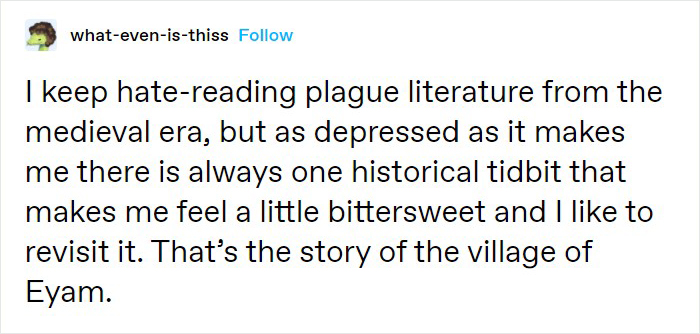



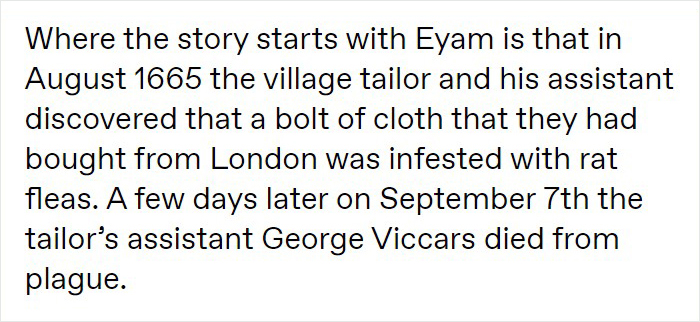






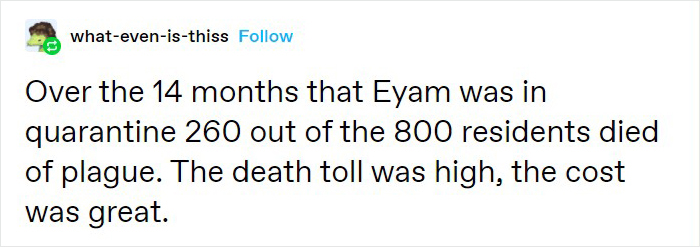
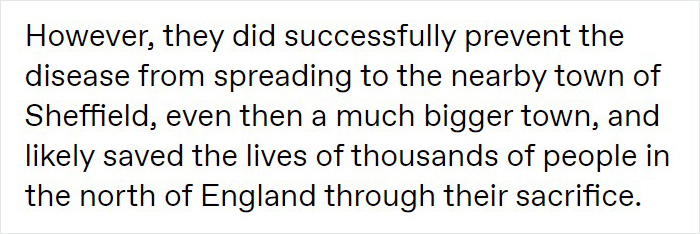
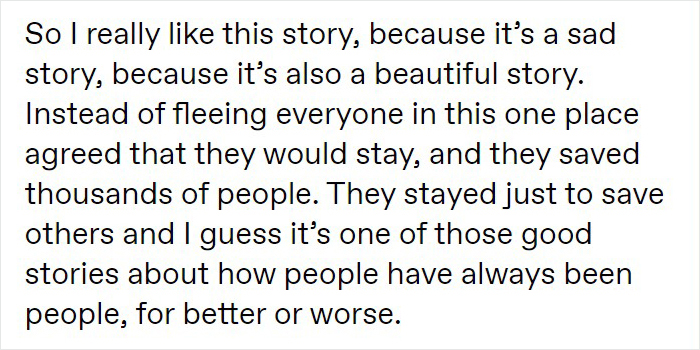


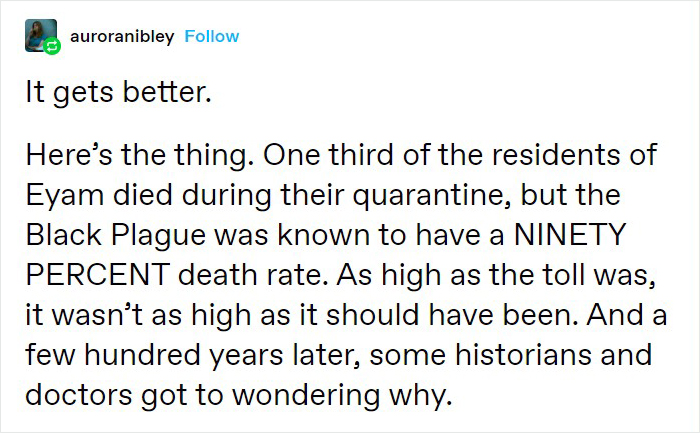
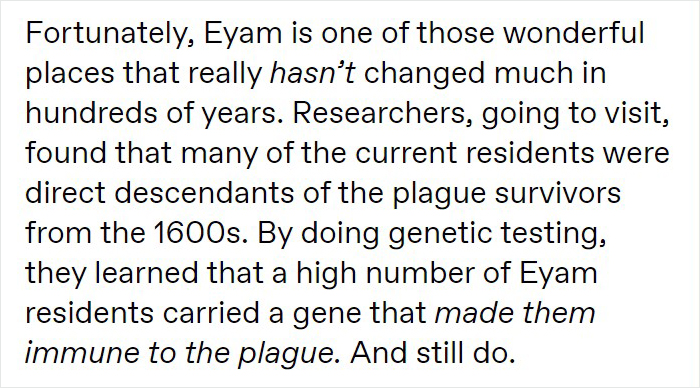

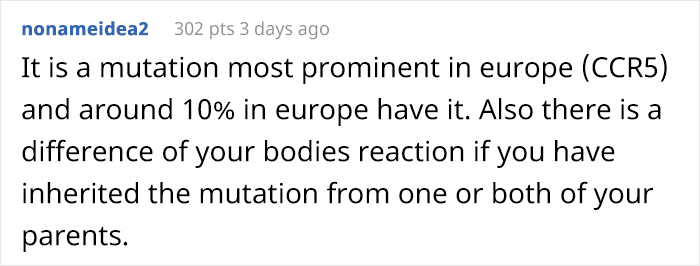







265
33